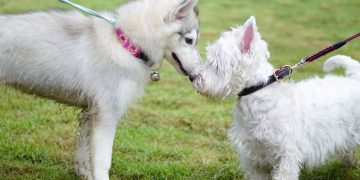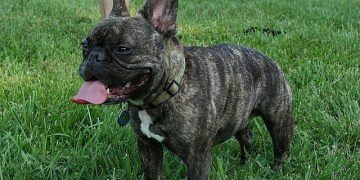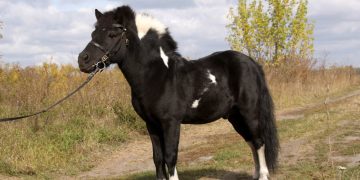History and Origins of the Exotic Shorthair
The Exotic Shorthair’s story begins in the 1950s in the United States. Breeders sought to create a short-haired version of the Persian cat that retained its gentle temperament and distinctive appearance. To achieve this, they crossed Persians with short-haired breeds like the American Shorthair, British Shorthair, and Burmese.
Initially, breeders aimed for a “silver” American Shorthair look but were surprised when kittens developed the Persian’s flat face and round eyes, combined with a dense, plush short coat. The breed was officially recognized in 1967 by the Cat Fanciers’ Association (CFA) as the Exotic Shorthair, and it quickly rose in popularity.
Over time, breeders focused on maintaining the Persian’s key features while preserving the low-maintenance nature of the short-haired coat. Today, the Exotic Shorthair stands as a breed in its own right, widely celebrated as a loving, easy-to-care-for cat.
Physical Characteristics of the Exotic Shorthair
The Exotic Shorthair has a charming and instantly recognizable appearance that resembles a “teddy bear” in feline form. Here’s a detailed breakdown of their physical features:
1. Coat
- The Exotic Shorthair’s plush, dense coat is one of its defining traits. Unlike the long, flowing coat of the Persian, their fur is short, thick, and incredibly soft.
- They are low-shedding, making grooming easier compared to their Persian relatives.
- The coat comes in a wide variety of colors and patterns, including solid, bi-color, calico, tabby, pointed, and more.
2. Head and Face
- Exotic Shorthairs have a flat, brachycephalic face, similar to the Persian breed. This gives them their characteristic “smooshed” nose.
- Their large, round, and wide-set eyes contribute to their sweet, expressive appearance. Eye colors typically correspond to their coat, ranging from copper and gold to green and blue.
3. Body Type
- The breed has a medium-to-large, sturdy body with a cobby build. They are compact but muscular, with strong legs and rounded paws.
- Their tails are short and thick, perfectly complementing their stocky bodies.
4. Size
- Exotic Shorthairs typically weigh between 7 to 12 pounds, with males being slightly larger than females.
Personality and Temperament of the Exotic Shorthair
The Exotic Shorthair shares the Persian’s gentle and affectionate nature, making it one of the most laid-back and loving cat breeds. Here’s what you can expect in terms of personality:
1. Affectionate and Loving
- Exotic Shorthairs thrive on human companionship and form strong bonds with their owners. They enjoy snuggling on laps and being close to their family members.
- Unlike more independent cat breeds, Exotic Shorthairs seek attention and affection but do so in a quiet, undemanding manner.
2. Calm and Easygoing
- They are known for their calm demeanor, making them excellent pets for individuals, seniors, and families with children.
- Exotic Shorthairs are not overly vocal; they typically communicate through soft meows, chirps, or purrs.
3. Playful but Low-Energy
- While Exotic Shorthairs enjoy playtime, they are less active compared to some other breeds. Short bursts of play with toys or gentle games like fetch keep them happy.
- They are often described as “lap cats” because they prefer lounging and relaxing.
4. Adaptable
- This breed is highly adaptable to various living environments, from apartments to large homes. Their calm nature makes them well-suited for quieter households.
Care Requirements for the Exotic Shorthair
While Exotic Shorthairs are considered low-maintenance cats, they still have specific care needs to ensure they live happy and healthy lives.
1. Grooming
- Coat Care: Their short coat requires minimal grooming. Weekly brushing helps remove loose fur and keep their coat soft and shiny.
- Facial Care: Due to their flat faces, Exotic Shorthairs are prone to tear staining and nasal discharge. Wiping their faces daily with a soft cloth can prevent irritation.
- Nail Trimming: Trim their nails regularly to avoid overgrowth.
- Dental Hygiene: Brush their teeth weekly using feline-safe toothpaste to prevent periodontal disease.
2. Nutrition
- Provide high-quality cat food that is rich in protein and low in fillers. Exotic Shorthairs can be prone to weight gain due to their low-energy lifestyle, so portion control is essential.
- Ensure access to fresh water at all times, as brachycephalic cats can be prone to dehydration.
3. Exercise and Enrichment
- While they are less active, Exotic Shorthairs still enjoy play sessions. Provide interactive toys, cat trees, and gentle games to keep them mentally and physically stimulated.
- Short daily playtimes help maintain a healthy weight.
4. Environmental Comfort
- Exotic Shorthairs prefer cozy, quiet spaces. Provide soft bedding, cat-friendly furniture, and calm environments where they can relax.
Health Considerations for Exotic Shorthairs
While the Exotic Shorthair is generally a healthy breed, their brachycephalic features make them prone to specific health issues:
1. Brachycephalic Airway Syndrome
- Their flat faces can lead to breathing difficulties, especially in hot or humid weather. Keep them cool and monitor for signs of labored breathing.
2. Eye Problems
- Tear duct blockages and excessive tearing are common due to their facial structure. Regular cleaning can help prevent staining and infections.
3. Polycystic Kidney Disease (PKD)
- PKD is a hereditary condition common in Persian-related breeds, where cysts develop in the kidneys. Responsible breeders screen for this condition, so it’s important to adopt from reputable sources.
4. Obesity
- Due to their sedentary nature, Exotic Shorthairs can gain weight easily. Monitor their diet and provide opportunities for light exercise.
Regular veterinary checkups are essential to detect and manage any potential health concerns early.
Why Choose an Exotic Shorthair?
The Exotic Shorthair is the perfect blend of charm, elegance, and simplicity. Their loving personalities, calm demeanor, and minimal grooming needs make them an ideal choice for cat lovers who desire a low-maintenance companion. Whether you live alone, have a bustling family, or are entering retirement, the Exotic Shorthair’s affectionate nature and adaptability make it an excellent addition to any home.
Conclusion
The Exotic Shorthair is a truly special breed, offering the beauty of the Persian cat with the ease of a short coat. Their sweet personalities, plush teddy bear appearance, and easygoing lifestyle have endeared them to cat lovers worldwide. With proper care, attention, and a loving environment, Exotic Shorthairs make loyal, affectionate companions who will bring warmth and joy to your home for years to come.
If you’re looking for a calm, loving, and low-maintenance feline friend, the Exotic Shorthair might be the purr-fect choice for you.

























